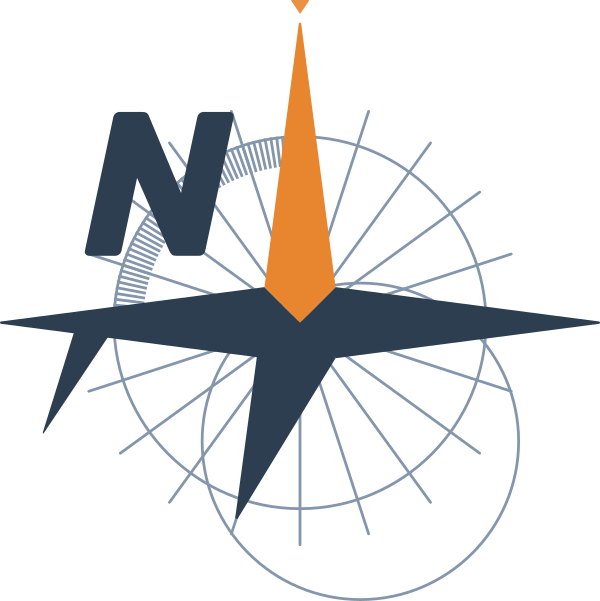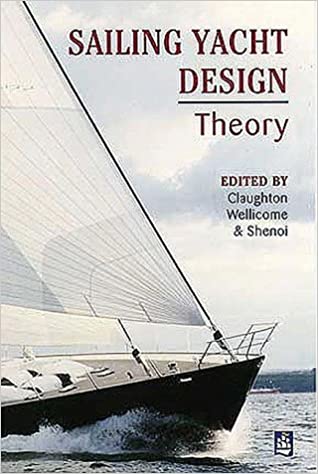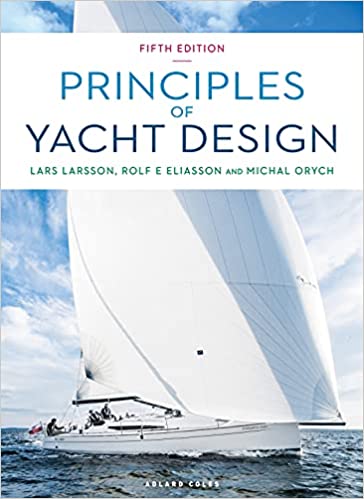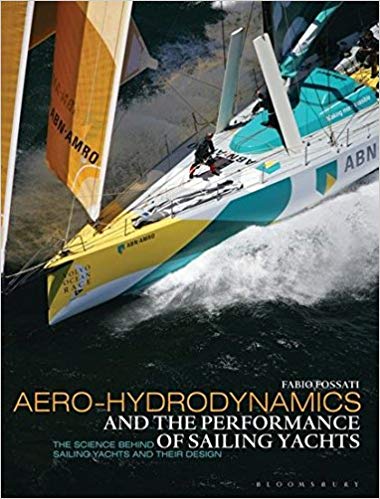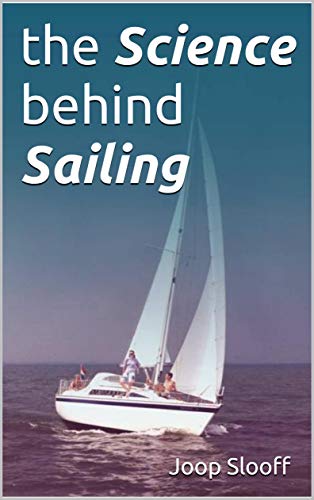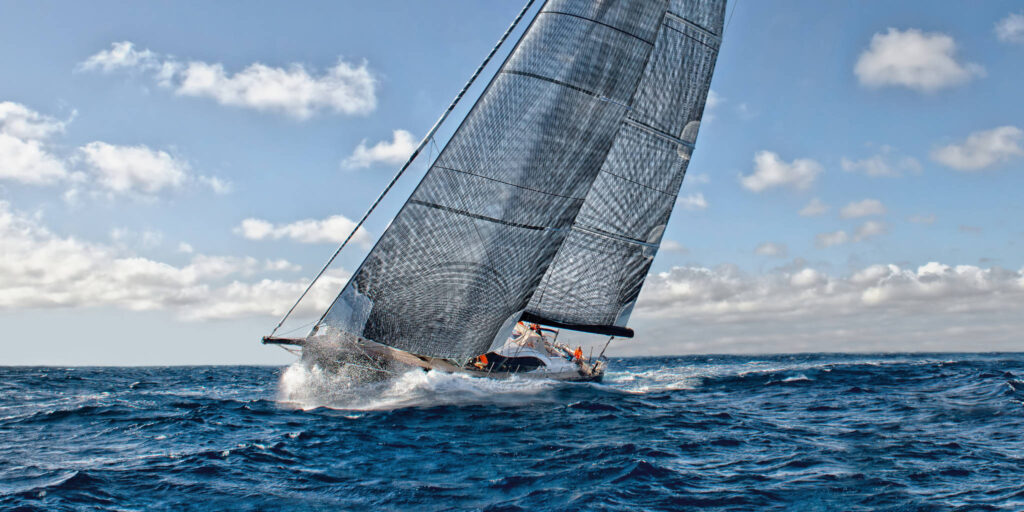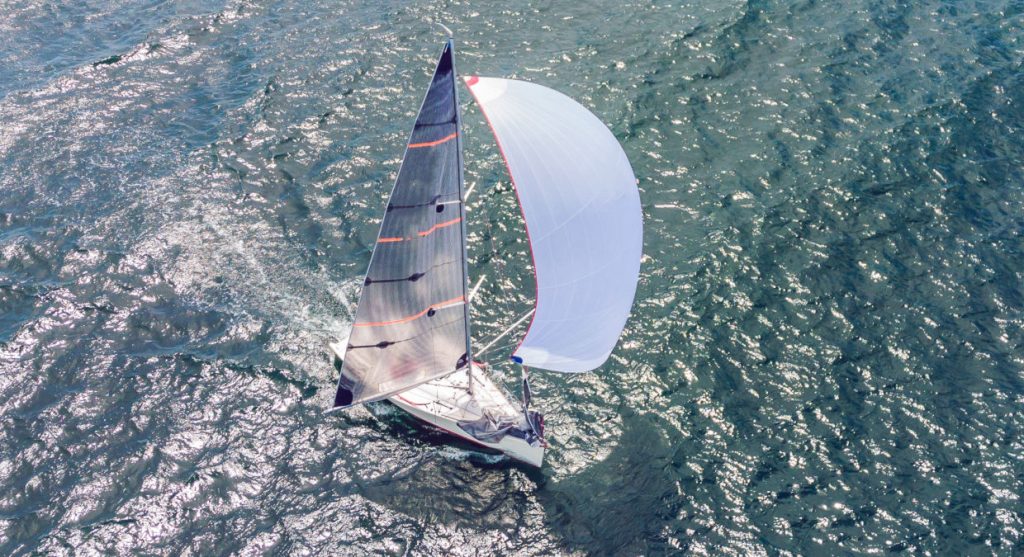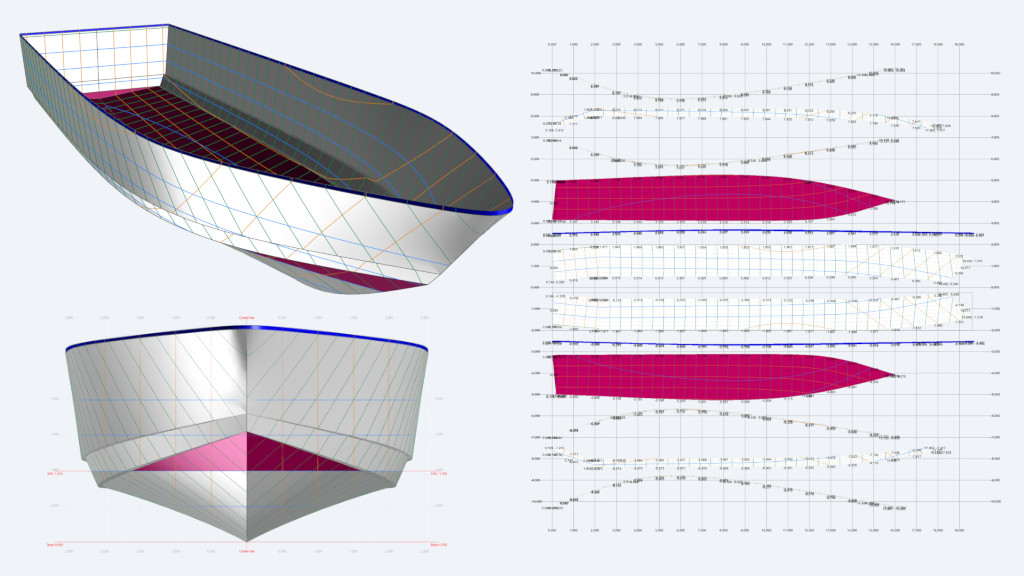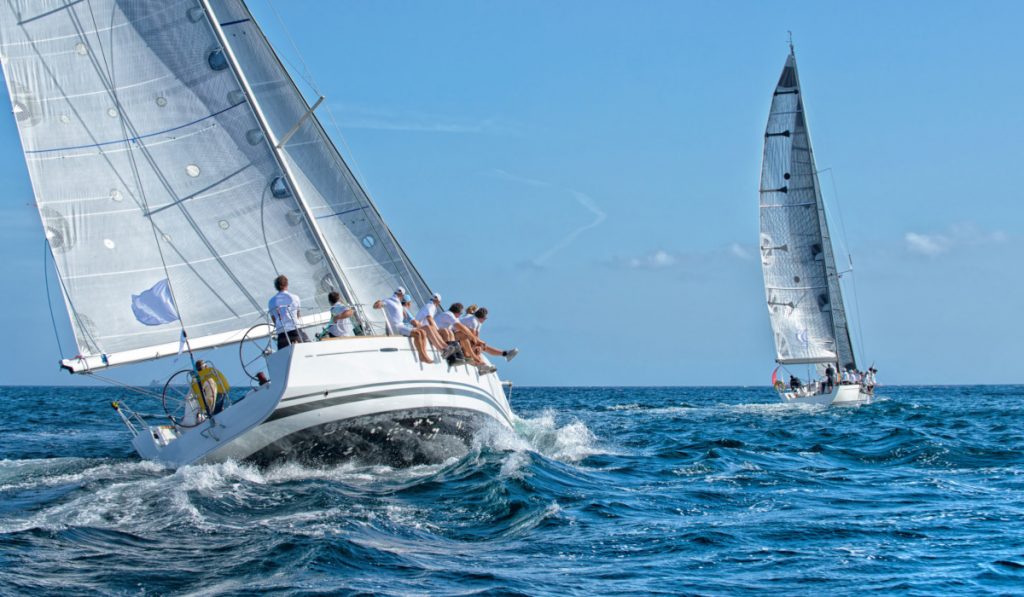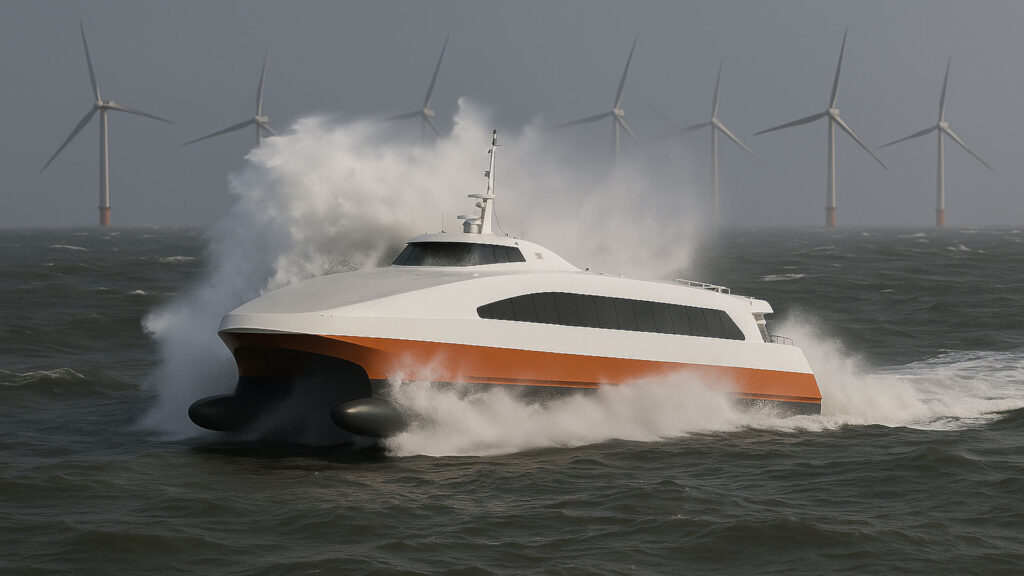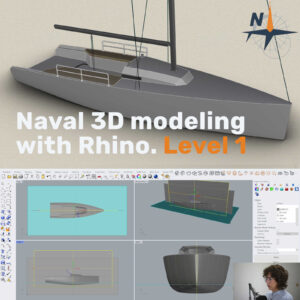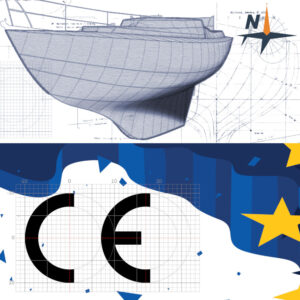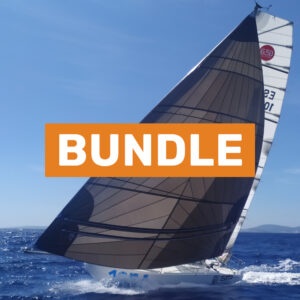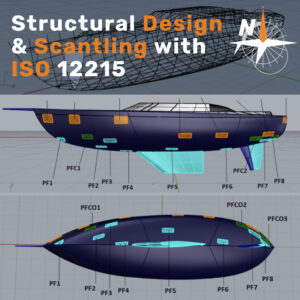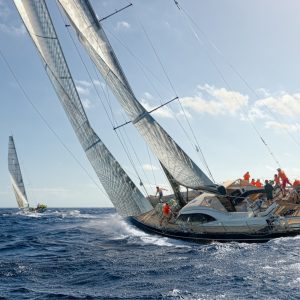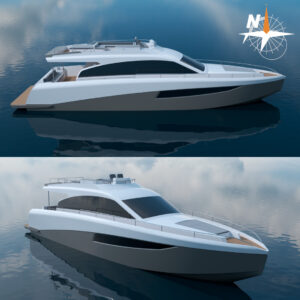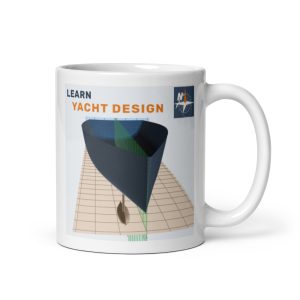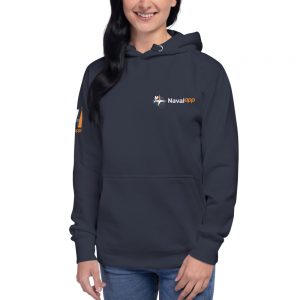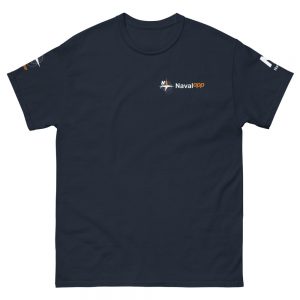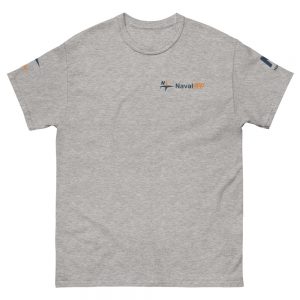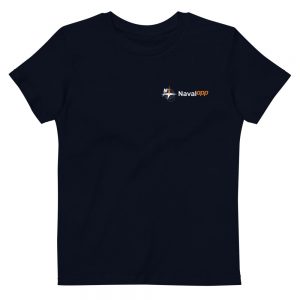Added resistance in waves knowing yacht’s radius of gyration (calculation)

[navalapp_app charts=’raw_kyy’ tabs=’yes’ delft=’yes’ overview=’no’ aero=’no’ calculate_button=’yes’ levels=’3,4,5′]
Added resistance in waves
A yacht that encounters waves while sailing will reduce its speed. In other words, the waves develop an additional resistance or drag that opposes the boat’s forward motion. This resistance is known as the added resistance in waves.
The two main mechanisms by which this additional resistance is developed are:
- the creation of additional waves by the boat as it heaves and pitches;
- the additional induced resistance created at the tip of the keel, rudder, and hull as the boat rolls.
Tests have found that the additional induced resistance due to the rolling motion is probably not very large compared to the first mechanism. Therefore only the creation of waves is usually considered.
When a boat is heaving and pitching in a seaway, it generates additional waves that are propagated in all directions from the boat. These waves are superimposed to the wave system of the wave-making resistance. The creation of these additional waves needs energy, which can only be obtained from the energy made available by the sails, thus reducing the energy available for maintaining/increasing the boat’s speed.
The characteristics of the encountered sea waves (often modelized with a mathematical tool called wave spectral density) and the geometrical characteristics and mass distribution of the boat (often modelized by a mathematical entity called Response Amplitude Operator, RAO) play fundamental roles in the added resistance in waves.
How does it work?
The calculation requires LWL, Tc, BWL, ∇c, CP, the yacht’s radius of gyration, Kyy, as well as the significant wave height, H1/3, and the modal period of the sea spectrum, T0.
The sea state is modeled by either the Bretschneider (open sea) or JONSWAP (limited fetch) spectra, considering the yacht is sailing in deep water. A custom value of the water density (default is 1026 kg/m3) can also be provided.
The results are calculated for all combinations of:
- Froude numbers 0.20, 0.25, 0.30, 0.35, 0.40 and 0.45;
- Angle of wave incidence, μ, 100, 120, 140, 160, and 180 degrees;
- Radii of gyration , Kyy, 0.20, 0.25, 0.30 times LWL, and the specific radius of gyration provided;
- Wavelength/ship length ratio, λ / LWL, starting at 0.5, 0.6 till 4.0
See also:
- Wave spectral density (calculation).
- Added resistance in waves: Response Amplitude Operator (calculation).
- Added resistance in waves of a yacht (calculation).
- What the hydrodynamic resistance is and why it matters.
- Sea state and wave forecasting.
- Surface waves.
- Introducing the hull.
References:
Some of the links shown below are affiliate links and we may earn a commission at no additional cost to you:
-

Claughton A. R., Wellicome J. F., Shenoi, R. A. (2006). Sailing Yacht Design: Theory
Check -

Larsson, L., Eliasson, R.E, Orych, M. (2022). Principles of Yacht Design
Check -

Fossati, F. (2009). Aero-Hydrodynamics and the Performance of Sailing Yachts
Check -

Slooff, J. (2018). The Science behind Sailing
Check
